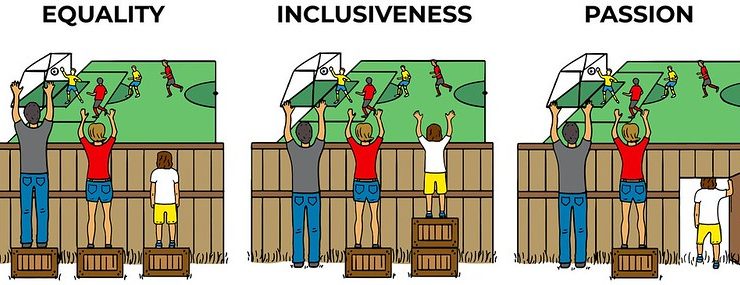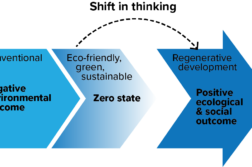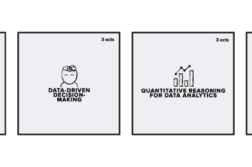Sometimes graphics have a significant power in impacting the world around us. In the context of learning, one good example of such is the accidental meme about equality created by Craig Froehle on December 19, 2012. He was trying to clarify for himself why “equal opportunity” alone was not a satisfactory goal and that consideration of equality of outcomes should be taken into consideration. He thought the easiest example to visualize this concept is kids of different heights trying to see over a fence. So, he grabbed a public photo of Cincinnati’s Great American Ball Park, a stock photo of a crate, and a clip art of a fence, and then spent a half-hour or so in PowerPoint putting together an image that he posted on Google+. Since then the one little graphic has been shared and adapted by millions.
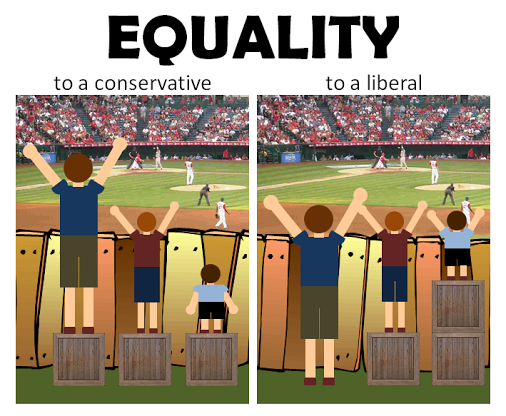
There are hundreds or perhaps thousands of different adaptations of this image that convey not only the same concept but also different related concepts, like equity, justice, fairness, liberation, empowerment, etc. If you have attended any teacher or pedagogical training, you have likely seen a variation of this image. In Kudos to Craig, we will introduce yet another adaptation, this time presenting the concept of learning in Design Factory.
Like many educators before us, we agree that equality if defined as sameness – giving everyone the same thing only works if everyone starts from the same place or level. A better approach is of course to ensure fairness in learning by providing access to same opportunities for each learner. Inclusive thinking takes a positive approach to towards differences of people and valuing them as they are (Raudasoja 2021). Inclusiveness can be supported by bringing all stakeholders to the same digital platform, by teamwork and team learning, for example (Kunnari et al. 2019).
Thinking about learning in Design Factory context, the key concept is, however, passion – passion-based co-creation (Björklund et al. 2017), passion for doing and passion for learning rather than being a spectator in learning. Hence our adaption of the graphic tries to emphasize the transformation from delivering everyone the same “information package” or learning content in the same way to a more inclusive approach and especially transforming the role of learner from a spectator to a player in the field of learning.
We feel that moving from equality to inclusiveness in delivering learning experiences is important, but not sufficient. We aim to create learning situations, where students can enter the field, be active players in development and co-creation. Getting hands-on and feet-on experience of learning by doing.
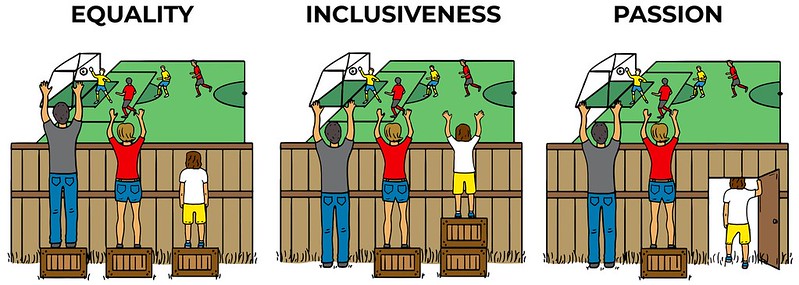
We wish that this illustration will inspire to develop passion-based learning in higher education.
Jari, Jali & Kristiina
